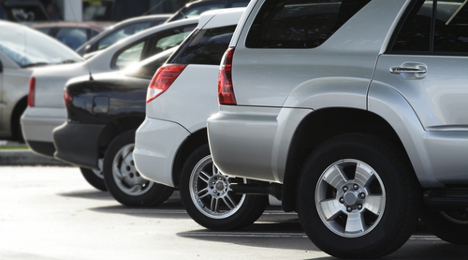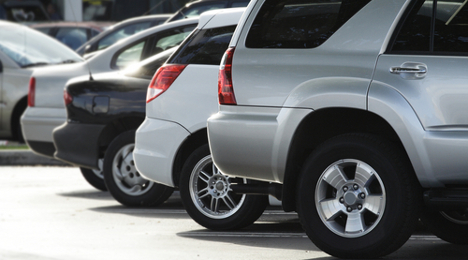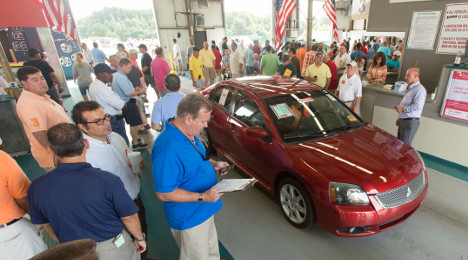On the surface, the statistics certainly suggest strong retention.
There was a 3.6-percent month-over-month increase and a 2.4-percent year-over-year gain in wholesale prices last month, according to the latest data from ADESA Analytical Services.
Based on this growth, it’s a valid assumption that this means the wholesale market is conditioned to take on the kind of supply spike forecasted in 2015.
But, take that with a grain of salt, says ADESA’s Tom Kontos, especially when considering certain market segments where a “different picture emerges,” he noted.
“One would be quick to conclude that the market seems to be admirably absorbing the highly anticipated growth in supply, and that would be true,” he said in the latest Kontos Kommentary.
“Still, it is important to disaggregate averages and indexes in order to look at the underlying impact the supply of off-rental and off-lease vehicles is having on current to 1-year-old models and 3-year-old models, respectively,” he continued.
Vehicles in these age groups did show price declines, Kontos said, with two major trends having a big influence.
First, after some slowdown at the end of last year, factory sales for heavy consignments of off-rental units picked up at auction.
Additionally, Kontos said, online and physical auction markets are continuing to get increasing numbers of off-lease cars from terms written three years ago.
“Strong retail demand, especially for CPO units, as well as moderate incentives, have partially offset these impacts for these age segments and the used-vehicle market as a whole,” he added.
Further Impact of Off-Rental Push
There’s certainly a couple outliers among the 15 segment classes included in ADESA’s data set. For example, the full-size car segment showed a 40.7-percent increase in price from December and a 26.2-percent gain from January 2014. Two other segments (compact cars, full-size vans) showed double-digit-percentage price increases on a sequential basis, while the most of the rest showed more moderate trend lines.
“Much of the month-over-month and year-over-year price variance by model class segment is driven by higher off-rental program vehicle sales this January compared to December and January 2014,” Kontos explained.
“Thus, not a lot should be read into the double-digit increases in average prices seen in some model class segments,” he added. “However, even after stripping off the impact of higher program vehicle sales, prices for midsize SUVs and full-size pickups still showed strength”.
Seller Segment Trends
Kontos notes that manufacturer consignment prices dropped 10.8 percent month-over-month and fell 11.5 percent from January 2014.
“As anticipated in this report last month, the tailwind to prices that might have been provided by the absence of program units due to sale curtailments in December, turned into a headwind as these units are being released in early 2015,” Kontos said.
Dealer consignment prices climbed 2.2 percent month-over-month and 3.7 percent year-over-year, leading Kontos to assert that independents have rapidly picked up the “excess” inventory that franchised dealers have collected via trade-ins on robust new-car sales.
Meanwhile, there was a 5.2-percent month-over-month uptick in fleet/lease consignment prices, which grew 1.3 percent year-over-year.
“This indicates healthy demand for older repo and commercial fleet vehicles, even as off-rental risk and off-lease prices face downward pressure from higher supply,” Kontos said.
Additional Thoughts on Off-Lease Impact
Speaking of that higher supply, when it comes to the increase in used-car volume expected over the next few years, “the story within the story,” says Jonathan Banks of NADA Used Car Guide, is off-lease vehicles.
Banks was speaking at a press conference during last month’s NADA Convention & Expo.
“This is really a big story,” Banks said of overall used volume increases, “and the story within the story is the lease volume coming back. We hear a lot about it, and it is concerning from a used-vehicle retention standpoint.”
NADA is expecting a 20-percent increase in off-lease volume for 2015, following a similar gain last year, Banks said.
In terms of overall used volume, this year, he said, “we’ll actually see a growth in that pool of zero to 8(-year-old vehicles) by about 1.9 percent. To put it in perspective, it was flat for ’14.”
And “the real story” in the off-lease volume trends comes in 2017, Banks said.
“The 25-percent lease penetration that we had this year (2014) — which represents about 3.2 million vehicles — that translates into record off-lease volumes coming back to the market in 2017,” he said.
But the 20-percent growth in off-lease volumes for 2015, Banks added, should still put supply of late-model vehicles at a rather reasonable level.
“There’s going to be some downward pressure, but nothing major,” he said. “In ’17, we’ll re-evaluate that situation.”
Against comparable weeks of 2014, overall auction volume was up 10.7 percent in January, according to the latest Economic Dashboard compiled by NAAA economist Ira Silver.
And when drilling down into the group of vehicles up to eight years old — whose volumes were up 8 percent year-over-year on a like-age basis, according to NADA Used Car Guide — there’s an interesting segment trend that surfaces.
In its latest Guidelines report, NADA said much of that increase was due to spiking volumes of 1-year-old vehicles, most of which were off-rental cars.
In fact, auction volume of 1-year-old vehicles (2014 model-year vehicles) in January was roughly 23 percent higher than the number of 1-year-old cars (so, 2013 model-year) in the same month last year.
“The group’s total volume of 71,000 was also the highest among its model year peers,” NADA Used Car Guide’s Jonathan Banks added in the report.
Pre-owned supply is expanding, but securing quality used inventory remains one of the most important items on the to-do list for many dealerships.
The company TradePending is looking to make that easier for franchised dealers, as well as helping to provide a simpler way for consumers to get rid of their old vehicles.
The company launched tradepending.com this week, an anonymous consumer-to-dealer vehicle sales and trade-in platform.
Not only does this new platform have the potential to ease used sourcing for dealers, but shoppers are also able to list their desired replacement vehicles — so dealers can shop around for potential customers, as well.
“Imagine a world where all 252,000,000 vehicles owned by consumers in the U.S. are in a perpetual state of potential trade-in. Why not explain the terms, variables and decision-criteria it would take to consider driving a newer, more fuel efficient, car or truck and let reputable dealers come to you to make it happen?,” said Brice Englert, founder and chief executive officer of TradePending. “There is no downside for consumers and dealers. Additionally, for dealers we offer more proactive inventory acquisition and a much better lead qualification environment. It’s really a win-win.”
The new website allows consumers to generate a market-based vehicle value report, which details all similar cars for sale by dealers within their area.
Then, they have the option of listing their vehicle as well as the replacement vehicles they have in mind, giving registered dealers the ability to browse the listings within their area.
Dealers then have the option of engaging with listings, which masks consumers’ personal information.
Consumers can receive multiple offers from dealers, and when they make accept an offer, a “Deal Certificate” is generated. This outlines the terms of the deal, which then sends the personal information of the consumer to the dealer.
“This is a great opportunity for dealers. Nearly 70 percent of the used cars they sell come from trade-in. Dealers have little opportunity to be proactive at selecting the cars they need directly from consumers. Now they can,” said Scott Chuhinko, partner and vice president of sales for TradePending.
Franchised dealers can register and check in on the inventory growth in their market.
If the latest analysis from CNW Research is any indicator, the number of cars you see out on the lots may be down a bit, with dealers having pulled back on inventory ahead of chillier months. But don’t expect that to last.
“In part due to the anticipated winter selling season, many dealerships reduced inventory going into the November-December-January period,” CNW president Art Spinella said in the firm’s latest Retail Automotive Summary. “That resulted in a shorter supply of vehicles and a 2.4-percent drop in days’ supply.”
However, Spinella adds this forecast later in the report: “Dealers are beginning to stock up for spring selling season, bolstering their inventory. Expect significant sales gains in March through May.”
Those sales gains were already starting to creep in for January.
CNW was forecasting on Wednesday that January used-vehicle sales would beat year-ago figures by 1 percent, saying the Northeast snowstorm in the latter part of January had little impact on the pre-owned car market.
The final tally for January was projected at more than 2.36 million used sales industry-wide, ahead of the 2.34 million used cars sold in the same month of 2014.
The weather in the Northeast slightly softened used sales, “but only because many outlets shut down their businesses on weather forecasts,” Spinella said.
“But the losses were minimal,” he added.
Meanwhile, TrueCar forecasted that January would see 2.92 million used-car sales, a 5.8-percent increase from a year ago.
CPO Impact from Supply
Going back to CNW’s point about increasing used-car supply, one area where volume is likely to be particularly heavy in coming months is the off-lease channel.
As illustrated by Cox Automotive chief economist Tom Webb in Manheim’s Auto Industry Brief for January, such heavy off-lease gains will have a two-pronged impact on one of the hottest sectors of the used-car market: certified pre-owned vehicles.
“It is widely expected that CPO sales will reach a fifth consecutive record in 2015 as higher off-lease volumes increase both the ability and the need to increase these programs that enhance manufacturer and dealer profits by improving customer satisfaction and loyalty,” Webb said.
AuctionNet volume climbed 5 percent year-over-year in 2014, and the fourth quarter showed a particularly noteworthy increase of 8 percent.
That’s according to data from National Auto Auction Association economist Ira Silver that was cited in social media posts from the organization this week.
This annual gain in auction volumes makes it three years in a row, reflecting what Silver had predicted in NAAA’s Economy and Auction Industry Report released after the third quarter.
In that same report, NAAA was forecasting that these increases could continue for years to come. The trend lines in the new-car market in recent years are likely to show separate and positive impacts in both dealer and commercial consignment down the road, NAAA said.
“Going forward we anticipate that increasing new-car sales and trade-ins will drive growth in dealer consignment up somewhat from recent levels,” Silver said in the report.
“Past growth in new-vehicles sales into leasing and fleets will support good gains in commercial consignment for the next couple of years as those vehicles make their way into the auction lanes,” he added.
NAAA president Ellie Johnson and president-elect Mike Browning addressed growing supply and how it will impact auctions in a recent interview with Black Book’s Ricky Beggs.
“I think the physical auctions are going to be needed now more than ever. To liquidate the assets of supply saturation we aren’t used to, we are going to need physical locations,” Browning said.
And Johnson said auctions should ramp up training in an effort to stay prepared for a busier period.
“We will have to make sure we are up-to-date on all of our training, whether you are a chain auction or an independent, make sure all of your team is up-to-date on it and service to the customer is key,” Johnson said.
Editor's Note: Staff Writer Sarah Rubenoff contributed to this report.

Though supply continues to expand, the year has turned, and the industry has begun looking out toward tax season. Consequently, instead of responding negatively to supply expansion, prices for used vehicles are expected to stay flat to up slightly this month.
According to the latest issue of Guidelines from NADA Used Car Guide, used prices will remain steady this month, with more pronounced increased expected in February and March.
“Coinciding with the steady receipt of tax refund checks, used-vehicle prices gradually improved over a given first quarter before tapering off as spring transitions into summer,” Jonathan Banks, NADA UCG executive automotive analyst, said in the report. “We expect to see a similar pattern play out this year. In addition to seasonality, used-vehicle prices will be most influenced by low gas prices, rising supply and increased new market pressure in 2015.”
By the end of the first quarter, NADA expects prices to average 1.5 percent to 2.5 percent higher than rates seen in December.
Banks pointed out the trucks segments will most likely benefit the most from recent declines in fuel rates. Midsize and large utility, van and pickup prices are expected to rise by 4 percent or more through March, according to NADA UCG data.
On the other hand, subcompact, compact and midsize car prices are scheduled to improve by 1 percent or less over the period, while luxury car and truck prices should grow by roughly 1 percent to 1.5 percent and 2 percent to 2.5 percent, respectively, the report indicated.
Though used-prices traditionally remain strong as consumers prepare to use their tax refunds toward their next vehicle purchase, there is another trend this time around putting even more money in shoppers’ pockets: the decline in gas prices.
According to the Guidelines report, the U.S. Energy Information Administration predicts that regular grade gas prices will average $2.60 per gallon this year, which is 80 cents lower than the 2014 average of $3.37 per gallon.
This drop in gas prices is expected to combine with the positive environment tax season creates at dealerships to support high demand for used vehicles. This demand may serve to keep pre-owned rates strong, even as supply floods the market and new-car incentives spike.
“The drop in pump prices will support demand by leaving more money in consumer wallets. In turn, this will help counteract — but not eliminate — the drag on used-vehicle prices,” said Banks. “The drag stems from an expanding supply of used vehicles and a new vehicle market that is sure to lean even more heavily on incentives than it did last year when discounts grew by 8 percent.”
This year began with Auto Remarketing and Wall Street observers peppering Manheim’s Tom Webb with questions about rising off-lease volume, which has a projected level of about 2.5 million that the auction company’s chief economist called, “average.”
Webb made that vanilla assessment of off-lease volume expectations because the industry pushed significantly more than 2 million units a year through that wholesale channel between 1998 and 2010, according to Manheim’s data.
“Off-lease volumes have been the top story in the industry for some time now. To a certain extent, it’s been a story that gotten ahead of itself I believe,” Webb said. “Sure, we’ve had some nice percentage increases. But it is off a ridiculously low base. Last year’s off-lease volume was the fourth lowest in the past 20 years.”
So what story should Auto Remarketing and investment analysts be watching?
“The real off-lease story is a couple of years from now. I just hope I’m around to report it because for the most part it’s going to be a good story, especially when we consider it from a retail aspect,” Webb said last week when he conducted his first conference call of the year.
“Up until now the recovery in new-vehicle sales has been driven by pent-up demand. By definition, that is not a sustainable force,” he continued. “We now have the opportunity to transition to an industry where current sales are supported by returning lessees. And not just any type of returning lease customer; it’s a satisfied one.
“That pretty much describes utopia from a dealer’s perspective,” Webb went on to say.
By 2018, Manheim is projecting off-lease volume and new-vehicle lease originations to set new highs with dealers originating nearly 4 million leases and auctions seeing more than 3.5 million units going down the off-lease lanes.
“One of these days I believe the experts will realize that leasing can protect residual values, not just destroy them,” Webb said.
Price Stability
As reported by Auto Remarketing last week, the Manheim Used Vehicle Value Index — a measure of wholesale prices adjusted for mix, mileage and season — came in at 123.9 to close 2014, a 1.8 percent uptick from a year ago and 2.1 percent higher than the third quarter. Webb pointed out the reading represented the least volatility in wholesale pricing for a four-year span since the index inception in 1995.
“To be sure, a lot of macroeconomic and industry factors are contributing to that stability,” Webb said. “But I think we also have to give credit to better and more efficient remarketing practices, which enabled the commercial consignors to anticipate, respond to and thus minimize impending swings in wholesale pricing.”
If the industry were to rewind back 13 years — before the days of sophisticated online sales and more technological advances — Webb would have offered a dark wholesale price forecast.
“If we had the same processes that we had in 2002, I, too, would be worried about a collapse in wholesale pricing. We do not, so I am not,” he said.
High-Mileage Rental-Risk Units
Manheim reported average prices for rental risk units sold at auction in December rose on both a month-over-month and year-over-year basis.
“After adjusting for broad changes in mix and mileage, prices for rental risk units have moved in a fairly narrow range over the past four years. Achieving that stability last year was no small feat, given the disruptive forces of harsh weather early in the year and massive manufacturer recalls throughout the year,” Webb said.
Also of note, Webb mentioned the number of rental risk units sold at auction in December was considerably higher than the low level of the previous year.
Furthermore, average mileage soared to a new high with December topping the 47,000-mile mark. Many of the exceptionally high-mileage units sold in December were concentrated in the minivan and sports car segments.
“Both categories handled the higher mileage with little impact on pricing,” Webb said. “If you look at some of the prices that these vehicles got and compared them to what they were getting with 40,000 miles versus 50,000 miles, dealers had no problem paying for the higher mileage.”
Quick Thought on CPO
Webb briefly touched on the performance of certified pre-owned sales, which came in at 2.34 million units, according to Autodata Corp. The figure represented a record for the fourth year in a row and an improvement from the 2013 total of 10.8 percent.
Can the industry make a drive for five and gain another 10 percent or more in sales?
“It’s always depending on how much marketing efforts the manufacturers want to put behind them,” Webb said. “You would anticipate a fifth consecutive record to occur, but a double-digit increase would probably be overly optimistic.”
There will likely be a 10-percent increase in used vehicles ages 5 years old and newer in 2015 — and then expect continued growth for years to come.
That’s according to forecasting data released in mid-December by TrueCar, which projects a normalization in used inventory this coming year. That should come as welcome news for many dealers, who have dealt with a supply pinch in recent years.
“This is the last year we expect used supply to be impacted by the recession’s pullback in new-vehicle buying,” said Larry Dominique, TrueCar’s executive vice president and president of ALG, TrueCar’s residual value data unit, in the Dec. 18 analysis. “An increase of supply would benefit consumers shopping for used vehicles next year (2015) in terms of selection and potentially lower transaction prices.”
TrueCar’s data set includes a forecast of used supply (ages 1- to 5-year-old vehicles) through 2020, and each year between now and then shows an annual increase.
The same analysis also was projecting that full-year 2014 used-vehicle sales would finish at 37.0 million, a 3.3-percent year-over-year hike. The new-to-used sales ratio would be 1:2.2, compared to a ratio of 1:2.3 a year earlier.
TrueCar attributes the decline in the ratio to the fact that new-car sales, with an anticipated gain of 5.9 percent for full-year 2014, were expected to climb more rapidly than used-car sales.
Interestingly enough, TrueCar points out in the analysis: “During the recession, the ratio widened to as much as 1:4.0 when new vehicle purchases plummeted, which also curbed future used-vehicle inventory levels.”
Those levels, as TrueCar mentioned, are starting to right-size. That normalization, plus a six-year low for unemployment, has led to what TrueCar described as strong opportunities for both new- and used-car shoppers.
TrueCar data indicates that new cars were fetching 1.9 percent stronger transaction prices in 2014 (at $31,831) than they were a year earlier, and the increase on used cars was even more substantial. Buyers were shelling out 5.9 percent more, with average used-car transaction prices at $16,335.
The overall revenue from new- and used-car sales for 2014 was projected to pass $1.1 trillion, an 8.3 percent year-over-year gain.
TrueCar notes in its analysis that this hike in revenue, pushed by consistently solid demand, “comes amid sustained economic expansion, an improving job market, falling gasoline prices and a consumer shift to higher revenue segments, including pickup trucks and luxury vehicles.”
Even as temperatures dropped and holiday shopping began, auto shoppers’ pocketbooks weren’t stretched too thin to show some interest in the sports car market.
For the second month in a row, pre-owned vehicles in high demand and short supply are mostly sporty models, sporty-luxury models and some utilities, mostly on the luxury end. That’s according to the November scarcity report from AutoTrader.com
“This is a reflection of an improved economy and increased discretionary income that has people shopping these popular segments — both new and used,” Michelle Krebs, senior analyst at AutoTrader, told Auto Remarketing.
The Honda S2000 came in as the No. 1 scarcest vehicle nationally on the certified pre-owned side of the market, while the Scion FR-S came in at No. 1 for late-model used vehicles.
“Sporty cars, both new and used, are making a comeback. The Honda S2000, no longer sold as new, was a popular one sold in limited volumes,” Krebs said.
Though an interest in sporty vehicles may not illustrate the usual seasonal trends, trucks are following a more consistent pattern for this time of year.
Last month, a number of heavy-duty trucks popped up on the scarcity list across the designate market areas for both CPO and late-model uses.
In fact, heavy-duty pickups from Ford, Chevrolet and GMC made the top 10 list of most-scarce used vehicles in some markets.
“This is a reflection of an improved economy and the surge in truck sales generally, both new and used,” said Krebs. “Strong truck sales correlate exactly with housing starts and construction, which are improving.”
Of the sport luxury brands on the scarcity lists this time around, Audi dominated.
CPO Audi models were in short supply nationally in November, and had three vehicles on the national scarcity list, the S4, A8 and S5.
The brand also had one vehicle on the scarcity lists in all 10 DMAs. Furthermore, the brand had three or more CPO models on six of those DMAs — Atlanta, Chicago, Dallas-Ft. Worth, New York, San Francisco-Oakland-San Jose and Washington, D.C..
“For starters, Audi is an extremely desirable brand for consumers, new and used, and the 2013 AutoTrader.com Millennial Study showed Audi as an aspirational brand for the younger generation,” Krebs said.
She also pointed out new-car sales for the brand have been soaring and the OEM hopes to sell 200,000 new vehicles annually by 2018. As of the end of November, the automaker had sold 162,773 new vehicles, according to AutoTrader.com, well on its way to the aforementioned goal.
But there is one hangup.
“Audi models on the new car side are always in short supply, well below industry average. On the new car side this year, Audi has about an average 45-day supply, according to Kelley Blue Book’s analysis, significantly lower than the average 64-day supply for luxury vehicles,” Krebs said.
Supply may continue to be an issue for the luxury brand as Krebs pointed out a few elements make the automaker particularly attractive to today’s buyers.
“Audi vehicles have attributes strongly desired by today’s new- and used-car buyers — a combination of luxury and sport. Luxury car sales are booming as are sales of sporty vehicles,” said Krebs. “Audi combines the two, particularly with its sport S models, which pop up on the top scarcity lists in November, nationally and in specific markets. Plus, Audi adds the availability of all-wheel drive.”
To illustrate this point, Krebs offered Chicago as an example. Three of the Audi models made the CPO scarcity list for this DMA. And AutoTrader found luxury vehicle sales have been growing in this metro area significantly as of late.
“In a separate AutoTrader analysis, Chicago showed the greatest growth in luxury vehicle sales in the third quarter — up 30 percent from a year ago compared with the national increase of 20 percent — and that largely was due to increased share of interest in luxury compact utilities, with the Audi Q5 topping the list,” said Krebs. “Chicagoans clearly are basing their vehicle buying decisions on their memories of last winter’s brutally snowy weather.”
Porsche was another high-end nameplate to be in short supply last month, with several CPO models making the list of the top 10 scarcest vehicles. The Porsche 911, Cayman and Cayenne were particularly hard to find.
The CPO 911 and Cayman too the No. 3 and No. 5 spots on the national CPO scarcity list, and the the Cayman and Cayenne showed up on several CPO regional scarcity lists.
“Porsche has been setting annual sales records on the new-car side every year since the recession and is on its way to another, with sales up 11.9 percent this year, outpacing the 6.8-percent increase in overall luxury sales,” Krebs said.

The future looks plentiful for both dealer and commercial consignment volumes at auction, according to the latest Economy and Auction Industry Report from the National Auto Auction Association.
Dealer consignment is up 1.4 percent year-to-date through three quarters, with commercial volume up a much heartier 7.0 percent, according to NADA AuctionNet data cited in the report.
In the third quarter alone, commercial consignment was up 8.1 percent year-over-year, with dealer consignment up 0.7 percent. Overall volume was up 4 percent in Q3.
“Auction volume growth in 2014 has been around 4 percent all year as strong commercial consignment has offset a slowdown in dealer consignment growth,” NAAA's Ira Silver said in the report. “We expect that auction volume will be up by 4 percent to 5 percent this year for the third annual increase in a row.”
And based on NAAA’s forecast, the annual gains may not stop at three.
The trend lines in the new-car market in recent years are likely to show separate and positive impacts in both dealer and commercial consignment down the road, NAAA said.
“Going forward we anticipate that increasing new- car sales and trade-ins will drive growth in dealer consignment up somewhat from recent levels,” Silver said. |
“Past growth in new-vehicles sales into leasing and fleets will support good gains in commercial consignment for the next couple of years as those vehicles make their way into the auction lanes,” he added.













